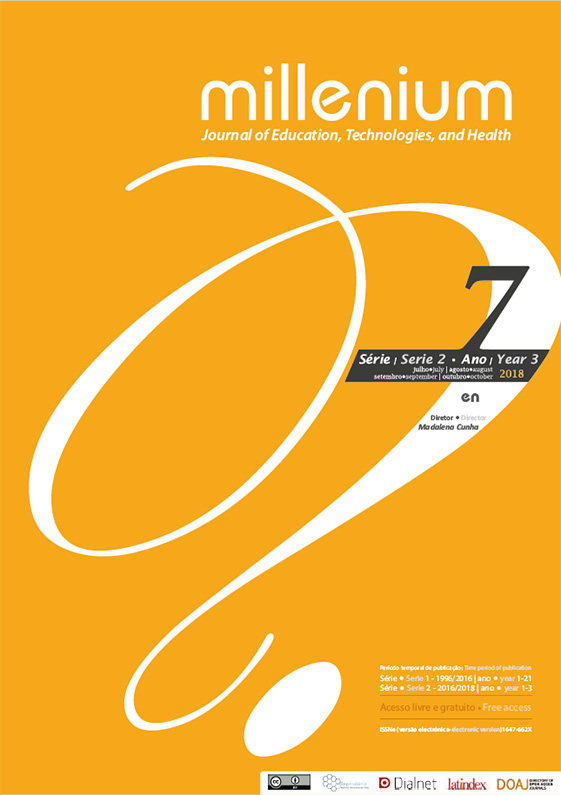Comportamento elasto-plástico ao corte de estruturas favo-de-mel e auxéticas reforçadas
DOI:
https://doi.org/10.29352/mill0207.07.00179Palavras-chave:
Favo-de-mel, Auxético, Corte, Elastoplástico, Análise por elementos finitosResumo
Introdução: Materiais auxéticos possuem um coeficiente de Poisson negativo. Ainda que a existência de auxéticos isotrópicos seja teoricamente possível, estes são inexistentes em estados naturais. Assim, tem havido um esforço para produzir auxéticos artificiais principalmente pelo design de favos de mel invertidos (reentrantes).
Objetivos: Este estudo explora novas estruturas reforçadas em favo de mel e auxéticas para melhorar o comportamento elasto-plástico estrutural em deformação de corte.
Métodos: A análise de elementos finitos (FEA) é usada para simular a carga de corte em estruturas reforçadas em favo de mel e auxéticas reentrantes, enquanto as tensões e deformações impostas são monitorizadas.
Resultados: A transformação auxética promove um aumento no módulo de corte, no entanto, gera deformações plásticas a valores mais baixos de deformação. No entanto, o efeito de fechamento de materiais auxéticos tende a reduzir a área de plasticidade afetada.
Conclusões: Neste estudo, é apresentada uma nova geração de estruturas reforçadas em favo de mel e auxética reentrante. Ainda que a transformação auxética gere deformação plástica para menores deformações de corte, é capaz de reduzir as áreas afetadas pela plasticidade e elevar a rigidez de corte.
Downloads
Referências
Alderson, A., & Alderson K.L. (2007). Auxetic Materials. Proceedings of the Institution of Mechanical Engineers Part G Journal of Aerospace Engineering, 221, 565-575. https://doi.org/10.1243/09544100JAERO185
Almgren, R.F. (1985). An isotropic three-dimensional structure with Poisson's ratio – 1. Journal of Elasticity, 15, 427-430.
Carneiro, V.H., Meireles J., & Puga H. (2013). Auxetic Materials – A Review. Materials Science – Poland, 31(4), 561-571. Retrieved from: https://link.springer.com/article/10.2478/s13536-013-0140-6.
Fung, Y. (1965). Foundations of solid mechanics. New Jersey, USA: Prentice Hall.
Gatt, R., Wood, M.V., Gatt, A., Formosa, C., Azzopardi, K.M., Casha, A., Agius, T.P., … Grima, J.N. (2015). Negative Poisson’s ratios in tendons: An unexpected mechanical response. Acta Biomaterialia, 24, 201-208. https://doi.org/10.1016/j.actbio.2015.06.018
Gibson, L.J., Ashby, M.F., Schajer, G.S., & Robertson, C.I. (1982). The mechanics of two-dimensional materials. Proceedings of the Royal Society A, 382, 25-42. https://doi.org/10.1098/rspa.1982.0087
Greaves, G.N., Greer, A.L., Lakes, R.S., & Rouxel, T. (2011). Poisson’s ratio and modern materials. Nature Materials, 10 (11), 823-837. Retrieved from: https://www.nature.com/articles/nmat3134.
Hu, L.L., & Deng, H. (2015). Indentation resistance of the re-entrant hexagonal honeycombs with negative Poisson’s ratio. Materials Research Innovations, 19, 441-445. https://doi.org/10.1179/1432891715Z.0000000001588
Jasiuk, I., Chen, J., & Thorpe, M.F. (1994). Moduli of Two Dimensional Materials With Polygonal and Elliptical Holes. Applied Mechanics Reviews, 47, 18-28. https://doi.org/10.1115/1.3122813
Keskar, N.R., & Chelikowsky, J.R. (1992). Negative Poisson ratios in crystalline SiO2 from first-principles calculations. Nature, 358, 222-224. https://doi.org/10.1038/358222a0
Lakes, R.S. (1987). Foam Structures with a Negative Poisson's Ratio. Science, 235, 1038-1040. https://doi.org/10.1126/science.235.4792.1038
Lim, T.C., Cheang, P., & Scarpa, F. (2013). Wave motion in auxetic solids. Physica Status Solidi B, 251, 388-396. https://doi.org/10.1002/pssb.201384238
Malek, S., & Gibson, L. (2015). Effective elastic properties of periodic hexagonal honeycombs. Mechanics of Materials, 91, 226-240. http://dx.doi.org/10.1016/j.mechmat.2015.07.008
Merhagni, F., Desrumaux, F., & Benzeggagh, M.L. (1999). Mechanical behaviour of cellular core for structural sandwich panels. Composites Part A: Applied Science and Manufacturing, 30, 767-779.
Timoshenko, S., & Goodier, J.N. (1951). Theory of Elasticity. New York, USA: McGraw-Hill.
Voigt, W. (1882). Allgemeine Formeln für die Bestimmung der Elasticitätsconstanten von Krystallen durch die Beobachtung der Biegung und Drillung von Prismen. Annalen der Physik, 252, 273-321. https://doi.org/10.1002/andp.18822520607
Downloads
Publicado
Como Citar
Edição
Secção
Licença
Os autores que submetem propostas para esta revista concordam com os seguintes termos:
a) Os artigos são publicados segundo a licença Licença Creative Commons (CC BY 4.0), conformando regime open-access, sem qualquer custo para o autor ou para o leitor;
b) Os autores conservam os direitos de autor e concedem à revista o direito de primeira publicação, permitindo-se a partilha livre do trabalho, desde que seja corretamente atribuída a autoria e publicação inicial nesta revista.
c) Os autores têm autorização para assumir contratos adicionais separadamente, para distribuição não-exclusiva da versão do trabalho publicada nesta revista (ex.: publicar em repositório institucional ou como capítulo de livro), com reconhecimento de autoria e publicação inicial nesta revista.
d) Os autores têm permissão e são estimulados a publicar e distribuir o seu trabalho online (ex.: em repositórios institucionais ou na sua página pessoal) já que isso pode gerar alterações produtivas, bem como aumentar o impacto e a citação do trabalho publica
Documentos necessários à submissão
Template do artigo (formato editável)





